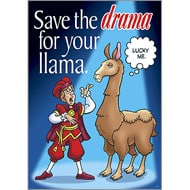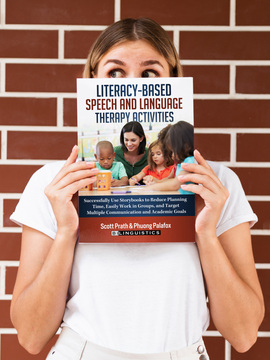There are times when we have had to be flexible and mix therapy groups with different ages for various reasons, including when we get really busy and need to catch up on make-up therapy. As school holidays and breaks approach, consolidating groups helps us to manage a hectic schedule and also to find creative ways to incorporate some of the Language Arts Literacy Standards expected at each grade level. To top it off, mixing up groups can add a little spice to our typical therapy sessions!
Incorporate Drama in your Teaching

No, not the kind of drama you’re thinking of…
We’re talking about plays. Theatre. Learning to use language in a creative way to perform in front of an audience.
Creating and preparing for a short mini play gives students a chance to practice speech and language skills while also building confidence, creating an increased sense of purpose and meaning, and encouraging teamwork with other “actors.”
Consolidate Therapy Groups with Different Ages

Younger students can also take on roles of the characters and practice formulating sentences while they practice their lines. Follow-up activities can include answering wh- questions about the story, sequencing the parts to act out, and describing the characters’ emotions/traits/motivations. Many of these activities are also directly related to the Common Core State Standards!
Both groups can also benefit from the vocabulary practice, including words specific to theater: actor/actress, script, scene/setting, stage, collaboration, conflict, antagonist, protagonist, dialogue, rehearsal, etc.
Create a Performance to Build Confidence
Let’s not forget about the performance! Perhaps a PPCD group (Preschool Program for Children with Disabilities) or preschool classroom would allow your students to come in to perform your short play. Take note of the smiles you’ll observe—not only from the delight of the young audience as they get to watch this special treat—but also on the faces of the young actors who will no doubt feel a great sense of pride and accomplishment when the curtain drops.[hr]
Ideas for Plays to get you started:
- Traditional Stories work well, including Goldilocks and the Three Bears, Three Billy Goats Gruff, The Three Little Pigs, The Little Red Hen, Jack and the Beanstalk
- Holiday or Thematic Plays, such as The Gingerbread Man
- Plays about educational themes, like bullying or teamwork
- Cultural tales that can be modified into simple plays:
- The Rabbit and the Jaguar (Mexican folktale)
- The Boy Who Cried Wolf (Folktale from Pakistan)
- The Calabash Kids: A Tale of Tanzania
More Resources:
Website includes a selection of drama scripts for a range of ages:
This site provides short stories from around the world. Stories can be downloaded in text form or in mp3s in English or other languages and modified into a script.
Folktales, fairy tales, tall tales, myths, and legends from around the world—all told by author Aaron Shephard. Central themes of stories and suggested age ranges provided.
Links to Common Core State Standards that describe standards related to drama that can easily be incorporated into therapy dramas:





